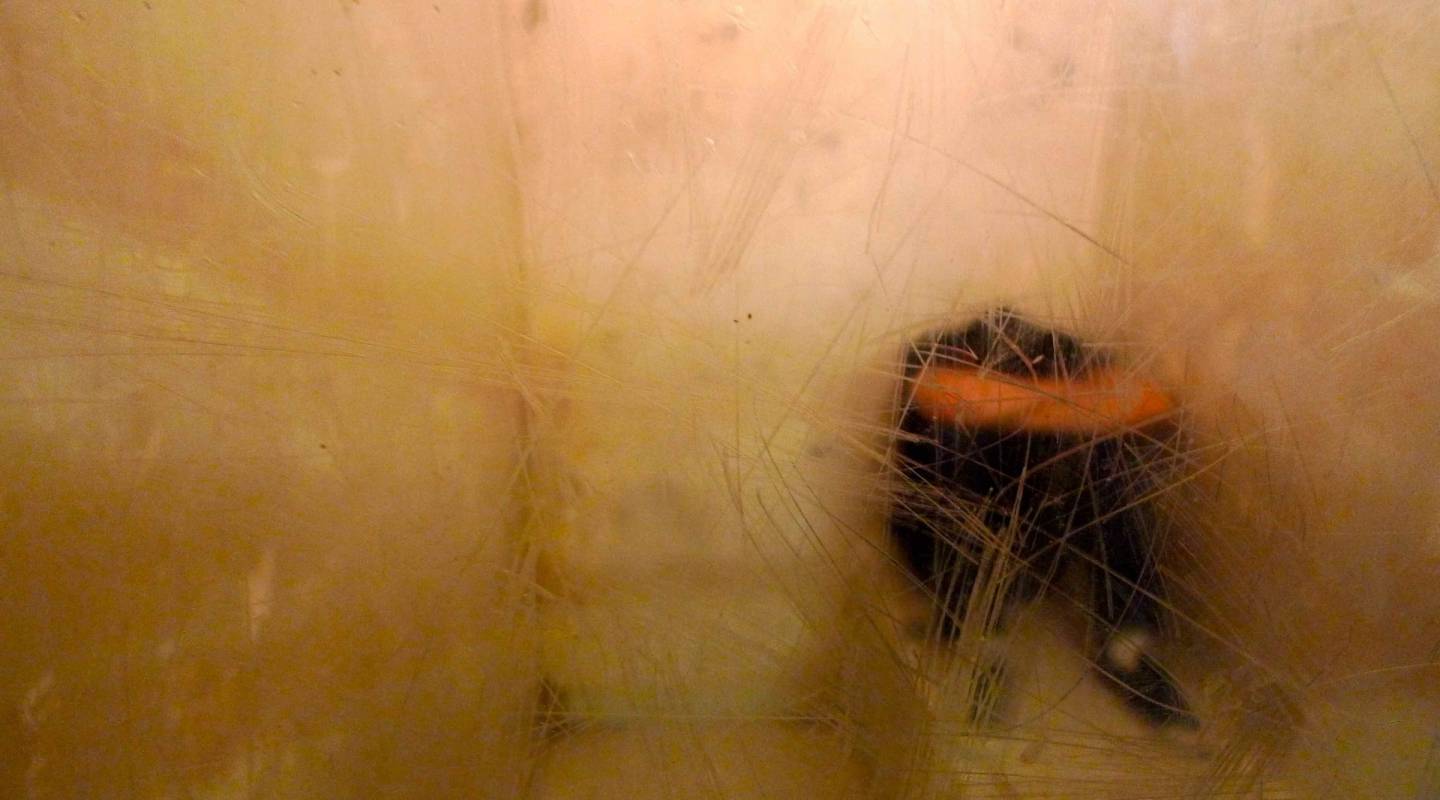Prisoners must complete a questionnaire as part of a Spanish “national plan against drug addiction.” This census, carried out every five years, collects information about the mental health of prisoners. In 2016, almost 30% of prisoners declared that they were diagnosed as suffering from mental illness.
In the Mental Health Strategy of the Spanish National Health System, bipolar and psychotic disorders are considered severe mental disorders (TMG). These affect about 3% of the incarcerated population.
Prisoners with mental disorders normally serve sentences under the ordinary prison regime. They do not receive any type of psychological support. In some prisons, they are confined to “closed units” where contact with other prisoners or guards is strictly limited. Hardly any activities are organised for them. The CPT recommended authorities to do everything in their power to ensure the transfer of these people to a medical facility.
Mentally ill prisoners being treated by the PAIEM programme are usually placed in separate units. They are sometimes admitted to the prison infirmary, which is the case at Mas d’Enric facility in Catalonia. Their programme aims to prepare prisoners for life after prison. As such, they are offered various activities and therapies in self-control and personal autonomy for example. They also have the option of taking art classes such as decoration workshops. A multidisciplinary team organises these activities. The CPT, however, has reported that psychiatric care is inadequate: prisoners do not receive any psychiatric care at all and psychiatrists and psychologists are not on site. Some people report bullying from other patients.
Women with mental illness at Wad Ras Prison are placed in a “polyvalent unit” that consists of four individual cells and a common dining area. The CPT has noted the lack of care and occupational activities for patients in this unit, and considered this environment inappropriate for this population.
Prisoners with drug addiction problems may be placed in a “Therapy and Education Unit” (Unidad Terapeutica y Educativa, UTE). “Drug-free units” are also present in more than half of the prisons. In 2016, more than 2,900 people were in these drug-free units.
By law, people subjected to security measures must be placed in forensic psychiatric institutions. However, due to the lack of places in these facilities, patients are sent to ordinary prisons, where they are frequently accommodated in the infirmary or PAIEM unit.
Access to mental healthcare¶
A medical examination is conducted within 24 hours of admission to prison. This medical examination must, amongst other things, screen incoming prisoners for mental disorders. The CPT has observed that, in Catalan prisons, prison officers remained present in the consultation room. It recommended that guards be present only upon the request of the health care professional.
The CPT has reported long delays between prisoners’ requests for medical consultations and actual access to health professionals.
Provision of mental health treatment¶
Psychologists provide occasional consultations in prison. No regular follow-up is possible. The treatments they provide are generally medications.
People under security measures do not receive any specific type of treatment. The CPT has reported that psychiatrists visit these patients on an irregular basis. It also noted that mentally ill prisoners placed in “closed units” receive inadequate care.
Prisoners with drug dependence problems sent to the UTE have in principle access to group therapy and some workshops. The CPT reported that in the Puerto III and Seville II prisons, the activities are not tailored to the prisoners’ needs. Furthermore, the support team is only present on an occasional basis.
Medical staff¶
Various entities manage prison healthcare. The prison administration is responsible for basic healthcare whilst psychiatrists and psychiatric professionals fall under the authority of regional health services. In 2015, around 600 general practitioners, 30 psychiatrists, and 300 psychologists provided full-time care in prisons. Each prison must hire a general practitioner with knowledge of psychiatry. The CPT noted that visits by psychiatrists in prison facilities are insufficient.
No psychiatrist visited Texeiro Prison between 2011 and 2016. Almost 6% of those imprisoned there, however, receive antipsychotic treatment.
A psychiatrist is on-site four hours a week at Léon Prison, where 25% of prisoners suffer from a confirmed personality disorder. No psychologist was present on a permanent basis in the prisons visited by the CPT in 2016.
The law requires that general practitioners and psychologists in the team responsible for PAIEM units be present in the prisons on a permanent basis.
Psychiatrists, personnel specialised in mental health, and other professionals are required to provide their services as needed. Associations also assist in running the programme. The CPT has noted that there is a lack of affiliated health professionals in the PAIEM units in the prisons visited and that no psychiatrist or psychologist is involved. Some PAIEM units do not have a permanent team. Healthcare professionals are, in this case, present on a weekly basis.
Medical confidentiality¶
Requests for medical consultations are usually made verbally or in writing to prison officers. Psychiatrists prescribe medications. The NPM flagged the sudden withdrawal of prescriptions for psychotropic drugs in the Cordoba prison. It noted the high prescribing rate of psychotropic medication at Madrid VI prison (Aranjuez).
Emergency measures¶
Prisoners in a psychological crisis may be transferred to a psychiatric hospital. They may be placed in isolation pending transfer if they are at risk of self-harm.
Mechanical restraint for medical purposes should only be used as a last resort, when prisoners are experiencing a psychological crisis. It is usually used when there is a risk of self-harm or when a given prisoner’s state of mind is highly agitated. Persons may be restrained for several hours until their condition stabilises. The use of this type of restraint varies from one prison to another.
Restraint was used in Catalonia more than 126 times during the first nine months of 2018.
It is carried out in a specific cell in the infirmary where there is no permanent monitoring system. Doctors and nurses visit the patient at regular times. Seville II and Puerto III prisons do not keep records on the use of mechanical restraint.
Mechanical restraint and solitary confinement are regularly used as disciplinary sanctions against a person in psychological crisis. The CPT reported that a woman in the “polyvalent unit” of Wad Ras Prison was placed in solitary confinement after an act of self-harm. Another female prisoner was threatened with restraint in a similar case. Women detained at Brians I Prison have denounced the excessive use of force by prison officers following suicide attempts or acts of self-harm.
The CPT reported acts of violence committed by officers of Puerto III Prison against a prisoner suffering from a mental health disorder who committed self-harm. The guards took him out of his cell before severely kicking and punching him. He was then mechanically restrained on his stomach for eight hours. During the medical examination, the prison doctor refused to report his injuries.
Treatment without consent may only be given if there is an imminent danger to the life of the prisoner in question. Judicial authorisation is required for care to be provided, and the judge must be informed within 24 hours after the treatment has been administered.
Prison officer training¶
Prison officer training varies per autonomous communities. The CPT has observed that the guards of the “polyvalent unit” of Wad Ras do not receive any specific training.
Continuity of treatment¶
Prisoners in the PAIEM treatment programme qualify for a support programme known as “Extended Bridge” (Puente Extendido) upon their release from prison. This special support programme is coordinated by the centres for social reintegration. A multidisciplinary team of professionals organises the continuity of treatment.










